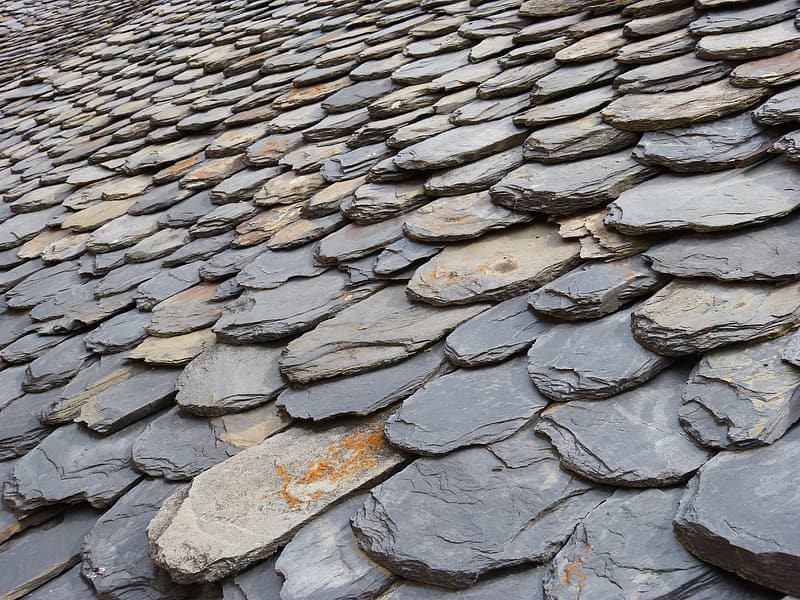
These are typically less than 100 microns thick. Under the microscope, the slate is found to consist of very thin lenses of quartz and feldspar (QF-domains) separated by layers of mica (M-domains). The texture of the slate is totally dominated by these pervasive cleavage planes. Slaty cleavage is continuous, meaning that the individual cleavage planes are too closely spaced to be discernible in hand samples. The direction of cleavage is independent of any sedimentary structures in the original mudrock, reflecting instead the direction of regional compression.

This is in contrast to the silky cleaved surfaces of phyllite, which is the next higher grade of metamorphic rock derived from mudstone. This mild degree of metamorphism produces a rock in which the individual mineral crystals remain microscopic in size, producing a characteristic slaty cleavage in which fresh cleavage surfaces appear dull. It is usually formed by low-grade regional metamorphism of mudrock. Slate is a fine-grained metamorphic rock that shows no obvious compositional layering, but can easily be split into thin slabs and plates. The phrases "clean slate" and " blank slate" come from this usage. They were traditionally a small, smooth piece of the rock, often framed in wood, used with chalk as a notepad or notice board, and especially for recording charges in pubs and inns. It may mean a single roofing tile made of slate, or a writing slate. The word "slate" is also used for certain types of object made from slate rock. Slate is not to be confused with shale, from which it may be formed, or schist. However, slate occurs in a variety of colors even from a single locality for example, slate from North Wales can be found in many shades of grey, from pale to dark, and may also be purple, green or cyan.

Slate is frequently grey in color, especially when seen, en masse, covering roofs. When expertly "cut" by striking parallel to the foliation, with a specialized tool in the quarry, many slates will display a property called fissility, forming smooth flat sheets of stone which have long been used for roofing, floor tiles, and other purposes. It is caused by strong compression causing fine grained clay flakes to regrow in planes perpendicular to the compression. The foliation in slate is called " slaty cleavage". Foliation may not correspond to the original sedimentary layering, but instead is in planes perpendicular to the direction of metamorphic compression. It is the finest grained foliated metamorphic rock. Slate is a fine-grained, foliated, homogeneous metamorphic rock derived from an original shale-type sedimentary rock composed of clay or volcanic ash through low-grade regional metamorphism.


 0 kommentar(er)
0 kommentar(er)
